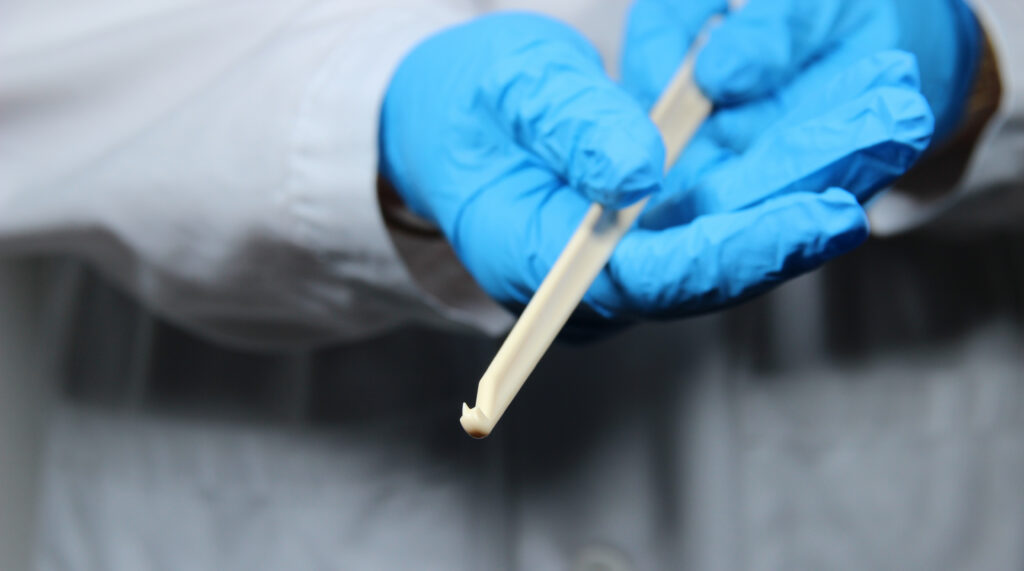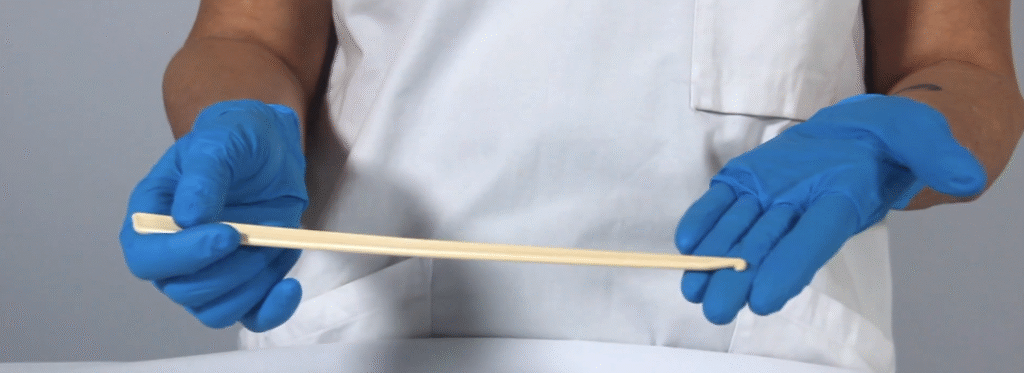A Common but Controversial Procedure in Maternity Care
Breaking the amniotic sac, known as amniotomy or artificial rupture of membranes (AROM), is one of the most frequently performed interventions during labor. The procedure involves making a small opening in the amniotic membranes to release the fluid, which can help to accelerate or facilitate labor. Despite its widespread use, the practice has been questioned, by researchers and midwives alike.

A Longstanding Practice
Amniotomy is not a new method. It has been used in various forms for centuries, with descriptions dating as far back as 1756 in medical literature. Historically, tools such as perforators (scissor-like instruments) or crochet-like hooks were used to rupture the membranes. In some cases, midwives would simply use their hands or fingers to create the opening.
Over time, these older techniques have been replaced by more precise and safer instruments, such as amniotic hooks, specially designed to reduce risks and make the process easier for healthcare providers. One such tool is the CETRO® HOOK, a modern and widely used instrument for amniotomy.

CETRO® HOOK – Designed with Practical Use in Mind
The CETRO® HOOK is a sterile, single-use instrument commonly used in Swedish maternity care. It features a rounded tip, a protected point, a sharp hook, and an ergonomic grip. Over the years, it has been incorporated into the everyday workflow of many midwives and delivery teams.

Research Findings: Common but Debated
Although amniotomy remains one of the most frequently used interventions during childbirth, scientific support for its benefits is relatively limited. A comprehensive study led by Sofia Tallhage, a midwife and PhD candidate at Linnaeus University, explored both the frequency of amniotomy use and midwives’ experiences with the procedure.
Key findings include:
- 40% of all births in Sweden involve amniotomy.
• There are significant differences between hospitals, suggesting variations in routines and possible overuse.
• Midwives generally prefer to avoid routine amniotomy in order not to disrupt the natural labor process.
• The decision to perform an amniotomy is typically based on a combination of clinical guidelines, professional judgement, and the individual needs of the woman.
Risks and Complications
Some research has also focused on the potential risks associated with amniotomy, such as::
- Umbilical cord prolapse, where the cord slips out before the baby, is rare but more likely under certain risk factors, including high fetal station, breech presentation, or previous cesarean section.
- Severe perineal tears (sphincter injuries) were more common in first-time mothers when amniotomy was performed close to delivery. However, amniotomy itself was not found to be an independent risk factor when adjusted for other variables.
A Tool – Not a Solution in Itself
It is essential to remember that amniotomy is not a treatment in itself, but rather a tool that may be useful in specific situations. It can help initiate or intensify contractions but should be used judiciously.
In a time when maternity care increasingly questions the medicalization of childbirth, the trend toward more technical and intervention-driven births, it becomes even more important to make conscious, individualized decisions. With the right knowledge and the right tools, such as the CETRO® HOOK, amniotomy can still be a valuable part of labor management, but only when used with respect for the natural process of birth.
